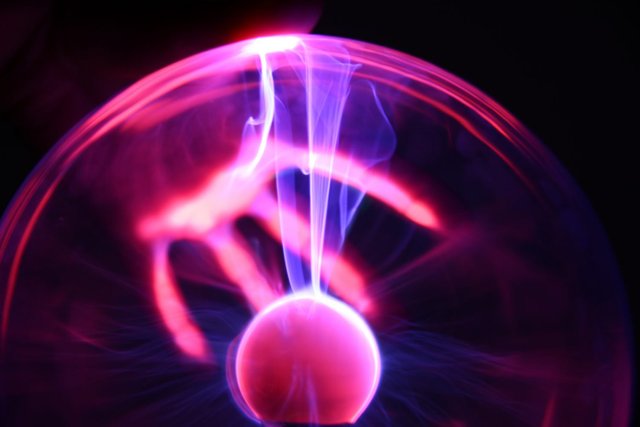How To Control Plasma in Nuclear Fusion

Controlling a Star
Plasma is known for its incredibly turbulent state, I mean, look at the sun! Some solar flares are bigger than 100x earth's diameter... So how would you actually "bottle a star" ?
If a gas is heated to a certain temperature, it changes into a plasma, also known as an ionized gas. Plasma is a completely new state of matter wherein the electrons have been stripped of their atomic nucleus. When there’s enough ionized atoms in the gas so that it changes its electrical properties we can talk about a plasma (Figure 8).

Once we approach the optimum temperature of D-T fusion, the gas will have turned into a plasma. The electrons will be stripped of from their nuclei because of collisions with other atoms. Those collisions are so powerful that their energy exceeds the attracting electromagnetic force between the nucleus and the electron, and that’s why the electron gets separated from the nucleus. Because the reacting atoms (deuterium and tritium) each only have one electron, the gas will be ionized relatively fast. The transition from a gas to a plasma is a gradual process, so there’s no definite temperature at which ionization happens.
Now that the nuclei and the electrons are separated, the gas becomes conductive. This property is used to heat the plasma even further, as we’ll see later in this thread. The behavior of a plasma isn’t the same as that of a gas, but just like a gas, it tends to fill all the geometrical room it can fill, a result of the very low cohesion forces. If we want nuclear fusion to occur, the plasma needs to be controlled.
Because the gas is now ionized, it reacts to magnetic fields, and that’s how we can give the plasma a defined shape in order to control it. The magnetic fields will be oriented in such a way that the plasma won’t get near the reactor walls (Figure 9). This is essential, as there’s no material known to man that can resist the extreme temperatures of a plasma.

Thanks for reading! This was part 4 of my thread on nuclear fusion. There are many more to come, and it gets even more interesting! If you liked it, please consider upvoting and/or following.